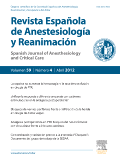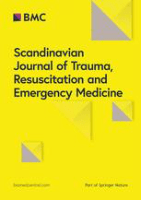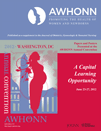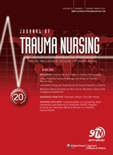
Resuscitation Plus
Scope & Guideline
Transforming Cardiovascular Medicine One Study at a Time
Introduction
Aims and Scopes
- Cardiac Arrest Research:
The journal emphasizes research on the epidemiology, outcomes, and treatment strategies for cardiac arrest, particularly out-of-hospital cardiac arrest (OHCA). This includes studies exploring survival rates, neurological outcomes, and the impact of various interventions. - Innovations in Resuscitation Techniques:
Resuscitation Plus publishes studies on novel techniques and technologies in resuscitation, including mechanical devices, advanced airway management, and extracorporeal cardiopulmonary resuscitation (ECPR). This focus aims to improve the efficacy and safety of resuscitation practices. - Education and Training in Resuscitation:
The journal highlights research on educational interventions for healthcare professionals and laypersons, exploring various training methodologies, such as simulation-based training, online courses, and community education initiatives. - Public Health and Policy in Resuscitation:
Research addressing public health issues related to cardiac arrest, including community response systems, access to automated external defibrillators (AEDs), and the impact of socioeconomic factors on survival outcomes, is a key focus area. - Neuroscience and Post-Resuscitation Care:
The journal also delves into the neurological aspects of cardiac arrest recovery, including the use of biomarkers, neuroprognostication, and post-resuscitation care strategies to enhance patient outcomes.
Trending and Emerging
- Use of Technology in Resuscitation:
There is an increasing focus on the integration of technology in resuscitation practices, such as the use of drones for AED delivery, smartphone applications for alerting first responders, and real-time feedback devices during CPR. This trend signifies a shift towards leveraging technology to enhance response times and improve patient outcomes. - Community Engagement and Bystander Intervention:
Research emphasizing the role of community engagement in cardiac arrest response, including training laypersons in CPR and increasing public access to AEDs, is gaining traction. This reflects a growing recognition of the importance of bystander intervention in improving survival rates. - Neuroprognostication and Biomarkers:
Emerging studies are focusing on neuroprognostication and the use of biomarkers to assess outcomes after cardiac arrest. This trend highlights a shift towards personalized medicine and the need for better prognostic tools in post-resuscitation care. - Diversity and Inclusion in Resuscitation Research:
There is an increasing trend towards examining health disparities in cardiac arrest outcomes across different demographics, including ethnicity, sex, and socioeconomic status. This focus aims to address inequalities in access to care and outcomes. - Simulation-Based Education:
The use of simulation-based education and training methodologies is on the rise, with research exploring its effectiveness for various populations, including healthcare professionals and laypersons. This trend indicates a commitment to enhancing training protocols for better preparedness in emergency situations.
Declining or Waning
- Traditional CPR Techniques:
There is a noticeable decline in studies focusing solely on traditional CPR techniques without incorporating new technologies or methods. As innovations in resuscitation, such as mechanical devices and advanced airway management, gain traction, traditional methods are less frequently the sole focus of research. - Single-Center Studies:
The prevalence of single-center studies seems to be decreasing as the journal increasingly emphasizes multicenter and international collaborations, reflecting a trend towards broader data collection and generalizability of findings. - Basic Life Support (BLS) Only Studies:
Research solely centered on basic life support (BLS) without integration into comprehensive resuscitation protocols or advanced life support is declining, as there is a growing recognition of the need for more integrated approaches in emergency care.
Similar Journals

Critical Care and Resuscitation
Elevating patient outcomes through cutting-edge research.Critical Care and Resuscitation is a premier peer-reviewed journal published by Elsevier, focusing on the dynamic fields of Anesthesiology, Critical Care, and Emergency Medicine. Established in Australia, this journal has been a significant contributor to scholarly research since its inception in 1999, maintaining a strong reputation with a commendable impact factor, evidenced by its Q1 quartile rankings across its relevant categories for 2023. The journal's commitment to disseminating high-quality research is reflected in its elite standings: it ranks #7 out of 109 in Emergency Medicine, #12 out of 136 in Anesthesiology, and #16 out of 110 in Critical Care. Aimed at researchers, clinicians, and healthcare professionals, Critical Care and Resuscitation provides a vital platform for the latest advancements in patient care and clinical strategies, making it an essential resource for those eager to stay at the forefront of these critical disciplines. Although lacking Open Access options, its rigorous peer-review process ensures the publication of valuable insights that shape current practices and influence future developments in healthcare.

Revista Espanola de Anestesiologia y Reanimacion
Driving excellence in patient care through rigorous scholarship.Revista Española de Anestesiología y Reanimación, an esteemed journal published by Elsevier, serves as a pivotal resource at the intersection of anesthesiology, critical care, and pain medicine. Established in 1963, this journal has continually contributed to the evolving dialogue in these fields, showcasing innovative research that informs practice and enhances patient care. With a current Q3 ranking in both anesthesiology and critical care disciplines as of 2023, it represents a vital platform for clinicians and researchers alike, who are committed to advancing knowledge and improving clinical outcomes. Though not an open-access publication, Revista Española de Anestesiología y Reanimación ensures rigorous peer-review processes and offers insights from leading experts around the globe, making it an invaluable reference for professionals seeking to stay abreast of the latest advancements and trends. Its bibliometric indicators and Scopus rankings affirm its relevance and influence within the academic community, solidifying its role as a cornerstone of anesthesiology and intensive care research.

Annales Francaises de Medecine d Urgence
Transforming Emergency Medicine ResearchAnnales Françaises de Médecine d'Urgence is a prominent journal dedicated to the field of Emergency Medicine, published by LAVOISIER. With an ISSN of 2108-6524 and E-ISSN of 2108-6591, this journal aims to disseminate vital research and innovative practices pertinent to emergency care, addressing the dynamic challenges faced by healthcare professionals in acute medical settings. While it operates under a non-open access model, it maintains an important role in advancing knowledge in the discipline, evidenced by its categorization in 2023 as Q4 in Emergency Medicine with a Scopus ranking of #85 out of 109, placing it in the 22nd percentile. Spanning years from 2011 to 2024, this journal serves as a platform for researchers, practitioners, and students committed to improving patient outcomes and advancing the science of emergency medicine. With its thoughtfully curated articles and studies, Annales Françaises de Médecine d'Urgence is a crucial resource for anyone who aims to stay at the forefront of developments in emergency medical care.

BMC EMERGENCY MEDICINE
Connecting researchers to enhance patient outcomes.BMC Emergency Medicine is a premier, open-access journal that has been at the forefront of the field of emergency medicine since its inception in 2001. Published by BMC in the United Kingdom, this journal is distinguished by its impact factor and remarkable Q1 ranking in emergency medicine, placing it among the top-tier publications in this vital area of healthcare. With a current Scopus rank of #30 out of 109 in the category of Emergency Medicine, and occupying the 72nd percentile, BMC Emergency Medicine is a leading platform for researchers and practitioners alike to disseminate their findings related to urgent and critical care. The journal embraces a broad scope within emergency medicine, encouraging submissions on a wide range of topics including clinical practice, innovative techniques, public health, and policy issues that critically affect emergency care. The open-access model ensures that high-quality research is readily available to the global community, fostering collaboration and advancing knowledge in the field. For those dedicated to improving patient outcomes in emergency settings, BMC Emergency Medicine represents an invaluable resource and community.

Scandinavian Journal of Trauma Resuscitation & Emergency Medicine
Shaping the Future of Resuscitation and Emergency MedicineThe Scandinavian Journal of Trauma Resuscitation & Emergency Medicine, published by BMC, stands as a leading open-access platform dedicated to advancing the fields of trauma, resuscitation, and emergency medicine since its inception in 2008. With an ISSN of 1757-7241 and an impressive track record, this journal has established itself in the top quartile of critical care and emergency medicine, achieving Q1 rankings in both categories for 2023. Its Scopus rankings further underscore its importance, placing it among the top 11 journals in emergency medicine and the 23rd in critical care and intensive care medicine, signaling a strong impact within the academic community. As we converge toward 2024, the journal continues to provide researchers, clinicians, and students with valuable access to cutting-edge research and developments in the sector, contributing significantly to knowledge, practice, and policy in emergency care. Located in the heart of the United Kingdom, the journal remains dedicated to its mission of fostering innovation and dissemination of high-quality research, ensuring that vital medical advancements reach those who need them most.

JOGNN-JOURNAL OF OBSTETRIC GYNECOLOGIC AND NEONATAL NURSING
Empowering professionals through evidence-based insights.JOGNN - Journal of Obstetric Gynecologic and Neonatal Nursing, published by Elsevier Science Inc, is a leading peer-reviewed journal dedicated to advancing the field of nursing in obstetrics, gynecology, and neonatal care. With a ISSN of 0884-2175 and an E-ISSN of 1552-6909, the journal has established itself as a pivotal platform since its inception in 1972, showcasing rigorous research and innovative practices that greatly enhance patient care and nursing education. As evidenced by its 2023 impact factor and impressive Scopus rankings—ranking in the top quartile (Q1) in Critical Care Nursing, Maternity and Midwifery, and Pediatrics, and Q2 in Medicine—it provides invaluable insights for healthcare professionals, researchers, and students alike. The journal’s commitment to high-quality, evidence-based articles reflects its critical role in shaping contemporary nursing practices and informing best practices in maternal and neonatal health. While currently not an Open Access journal, the information disseminated through JOGNN remains vital for those striving to inform their practice and improve patient outcomes worldwide.

ANASTHESIOLOGIE & INTENSIVMEDIZIN
Advancing Anesthesia and Intensive Care KnowledgeANASTHESIOLOGIE & INTENSIVMEDIZIN is a peer-reviewed journal dedicated to the fields of anesthesiology, critical care, and intensive medicine. Published by AKTIV DRUCK & VERLAG GMBH in Germany, this journal has been an essential resource in the medical community since its inception in 1978. With a current impact factor placing it in the Q3 quartile in both anesthesiology and critical care categories, it serves as a platform for disseminating cutting-edge research and innovative practices. The journal invites contributions that enhance the understanding of pain management, perioperative care, and intensive treatment methodologies. Although not open access, it remains committed to advancing knowledge and improving patient outcomes. With a strong focus on practical applications, ANASTHESIOLOGIE & INTENSIVMEDIZIN is invaluable for researchers, clinical practitioners, and students seeking to deepen their expertise in these crucial areas of healthcare.

Journal of Trauma Nursing
Enhancing Patient Outcomes with Evidence-Based PracticesJournal of Trauma Nursing, published by LIPPINCOTT WILLIAMS & WILKINS, is a pivotal resource in the fields of trauma, critical care, and emergency nursing. With an ISSN of 1078-7496 and an E-ISSN of 1932-3883, this journal has been at the forefront of disseminating cutting-edge research and innovative practices since its inception in 1995, continuing through 2024. Positioned within the Q3 quartile of the Advanced and Specialized Nursing, Critical Care Nursing, and Emergency Nursing categories, it provides valuable insights into trauma care that enhance clinical practice and patient outcomes. The journal is recognized for its commitment to advancing knowledge and improving the quality of nursing care, making it an essential publication for researchers, practitioners, and students who are dedicated to the fields of trauma and emergency nursing. While currently not available as Open Access, it remains a reputable source of peer-reviewed content aimed at fostering a comprehensive understanding of trauma nursing. Located in the United States at TWO COMMERCE SQ, 2001 MARKET ST, PHILADELPHIA, PA 19103, the Journal of Trauma Nursing continues to impact the profession significantly.

Journal of the American College of Emergency Physicians Open
Pioneering Innovations in Emergency Medicine ResearchJournal of the American College of Emergency Physicians Open is a prominent Open Access journal published by WILEY that has been committed to advancing the field of emergency medicine since its inception in 2020. As a vital resource for researchers, clinicians, and students, this journal aims to disseminate innovative research findings, clinical guidelines, and educational resources that support the rapidly evolving landscape of emergency care. With a solid Q1 ranking in the emergency medicine category and positioned within the top 25 ranks of Scopus’ emergency medicine listings, the journal ensures high visibility and accessibility for critical research. As an open-access publication, it provides unrestricted access to its content, facilitating knowledge sharing and collaboration among professionals globally. The journal's significant impact on the field is reflected in its growing influence, underlining its relevance as an essential platform for advancing emergency medicine practice and research.

Journal of EndoVascular Resuscitation and Trauma Management
Innovating Critical Care for a Safer TomorrowJournal of EndoVascular Resuscitation and Trauma Management, published by OREBRO UNIV HOSPITAL in Sweden, serves as an essential platform for disseminating innovative research in the critical fields of endovascular resuscitation, trauma management, and emergency medicine. Since its establishment as an Open Access journal in 2017, it has aimed to bridge knowledge gaps in critical care and surgical practices, providing a space for authors to share their pioneering work with a global audience. With its indexed ranking in the Q4 category for Critical Care and Intensive Care Medicine, Emergency Medicine, and Surgery, this journal offers a unique opportunity for researchers, professionals, and students to engage with contemporary issues and advancements in these vital areas of healthcare. By keeping its archive accessible and promoting collaboration among the scientific community, the Journal of EndoVascular Resuscitation and Trauma Management continues to contribute significantly to the evolving landscape of medical research and practices.